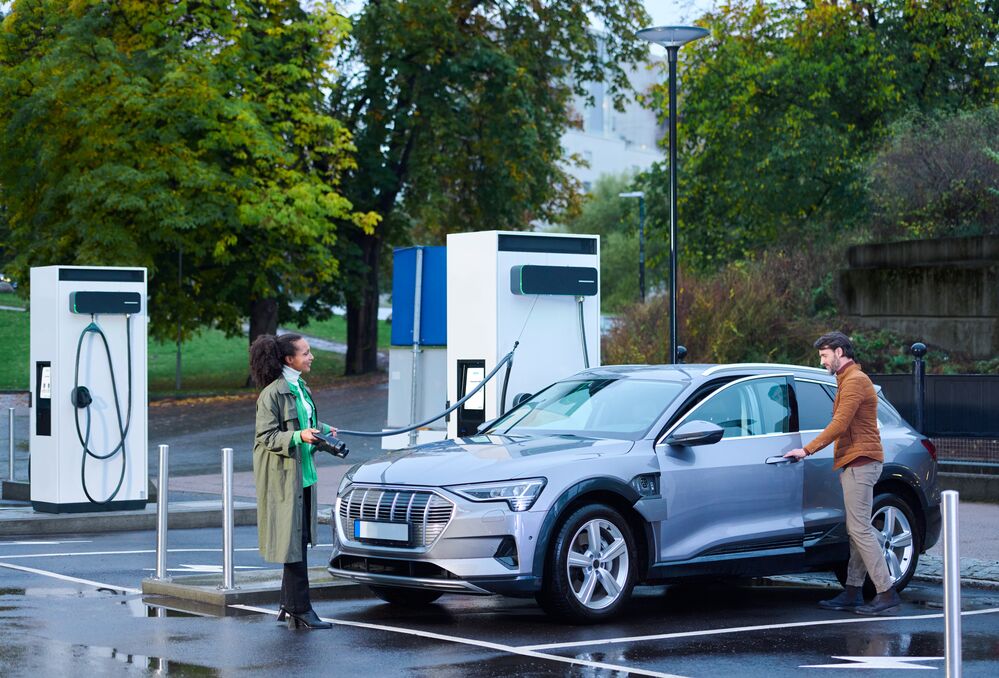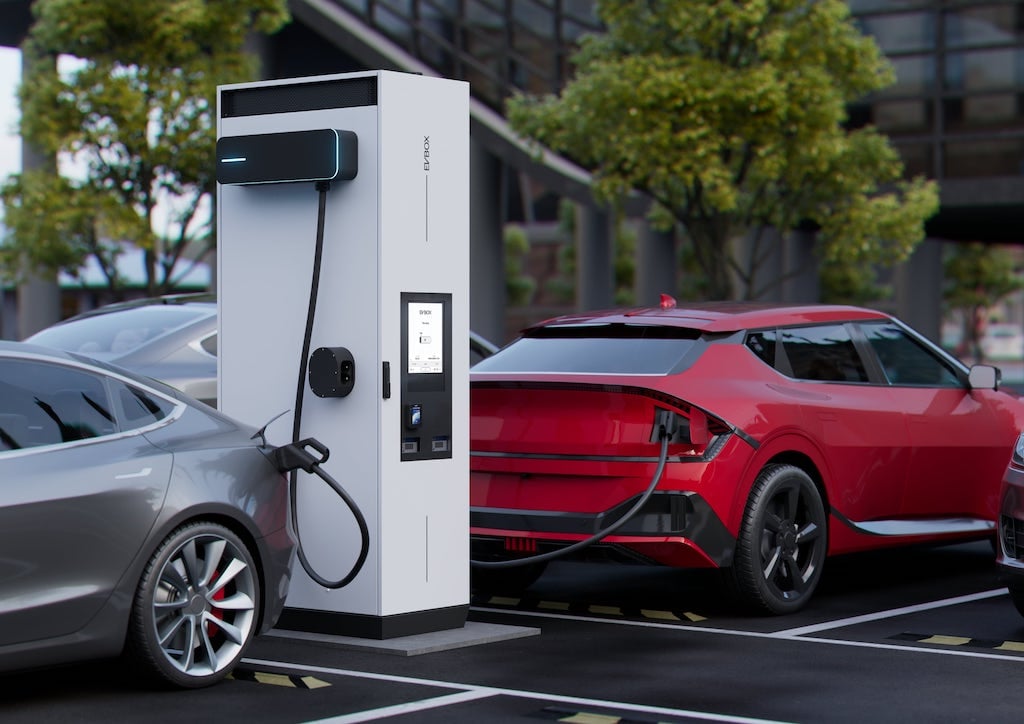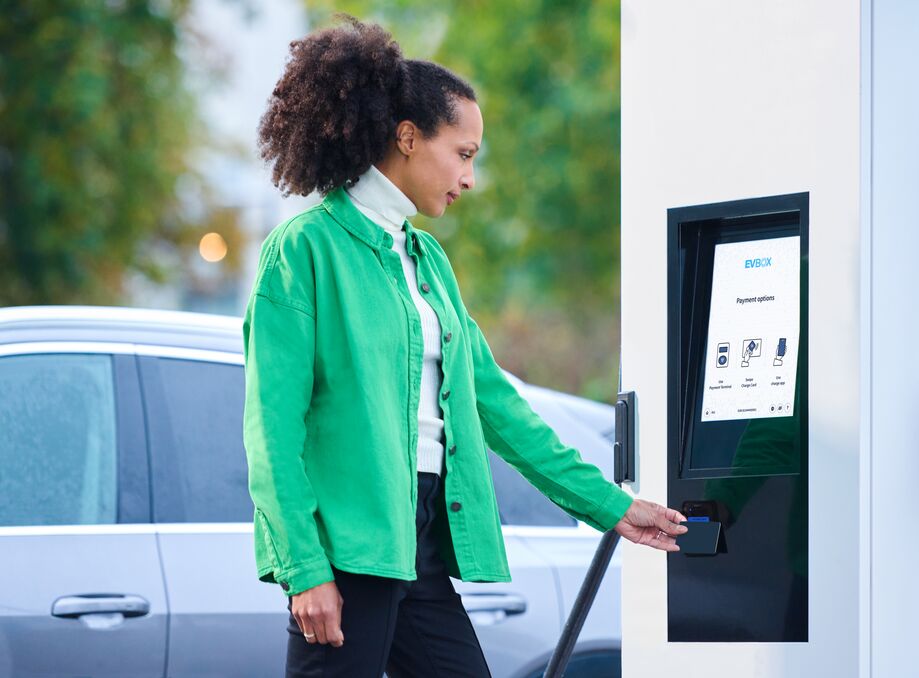
This article illuminates the growing potential of the DC fast-charging industry and the importance of effective business strategies in seeing a sustainable return on investment.
We will highlight the following four different investment strategies for entry into the DC fast-charging market in greater detail:
Direct Ownership
With this strategy, you purchase the DC charging units outright and are responsible for everything (including the installation and (preventive) maintenance.
Leasing
By leasing DC charging equipment, you avoid high upfront costs and agree to a long-term leasing contract with a CPO or EMSP, paid in monthly or yearly installments.
CaaS (Charging as a Service)
Charging as a Service (CaaS) is a subscription-based model in which you pay a CaaS provider a monthly fee in exchange for a DC fast charging service that suits your needs.
Partnered Shareholding
This strategy shares a lot of similarities with direct ownership, with one major difference – ownership is shared among one or several additional parties, in lieu of a proportional share in revenue from the fast-charging site.
The need for DC fast-charging investment strategies
If you’ve noticed the explosive proliferation of electric vehicles (EVs) on the road in recent years, you’re not alone. The industry is enjoying a 35% year-on-year growth in sales at present, with this trend expected to continue throughout the 2020s in tandem with the global shift toward a carbon-neutral economy.
Naturally, there is an accompanying need for investment in a dependably fast charging solution – namely: DC, or Level 3, fast charging stations. As investment groups, entrepreneurs, and private businesses alike recognize the potential in e-mobility investment, the question arises: what are the challenges and advantages of investing in DC fast charging, and where would you begin?
In essence, investment in DC fast charging would be an investment on the ground floor of an industry set to continue growing exponentially over the coming years.
Nevertheless, the significant amount of start-up capital required to purchase, or invest in, DC charging stations does necessitate a comprehensive investment strategy to be viable.
This article discusses the pros and cons of DC fast-charging investment, before breaking down the four most common investment strategies – to help you decide which, if any, might be right for you.

Why invest in DC fast charging stations?
Where a maximum power output of 50 kW impressed many early adopters only a few years ago, times have changed.
Today, Level 3 charging stations are able to deliver a lot higher maximum power outputs, some are even able to deliver up to 400kW of power allowing drivers to replenish up to 300km of range after just 15 minutes of charging.
Such a leap in charging times goes a long way to eliminating ‘range anxiety’, one of the most significant barriers to widescale EV adoption. And businesses that invest in fast-charging equipment can supply a service that’s in high demand in a quickly growing market.
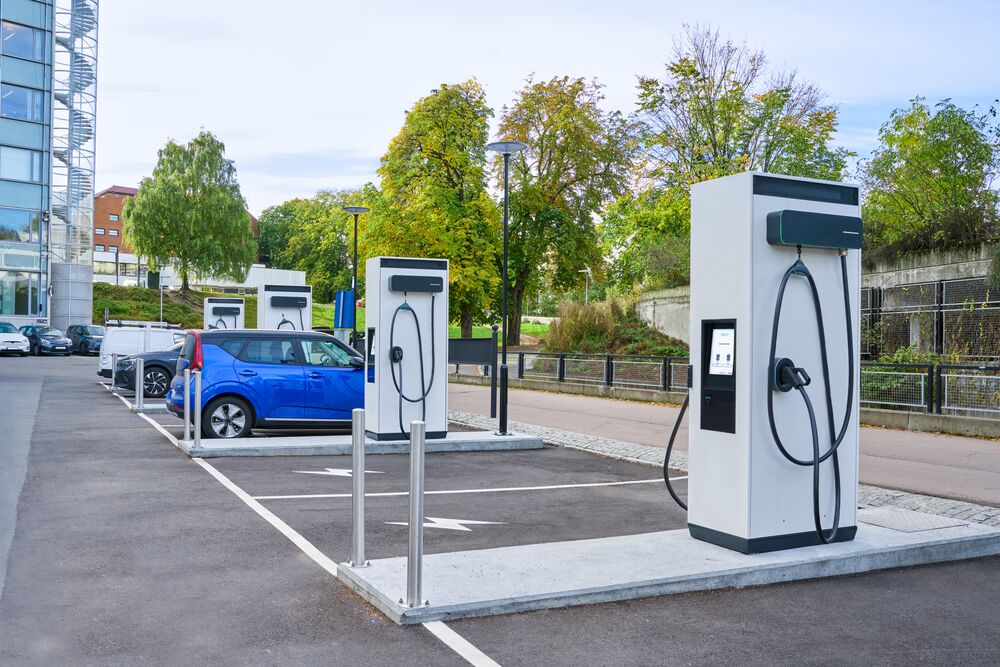
Before we move onto those strategies, let us quickly weigh some of the overall pros and cons attached to a DC fast-charging investment and explain some important terms.
Pros to DC investment
- Level 3 charging is the future of public EV charging.
- The market for DC charging is young and yet to consolidate, providing early investors with an advantage over their competitors.
- Opportunities to create and grow additional revenue streams linked to fast charging are numerous – e.g. placing DC chargers in restaurant parking lots, by cafés, or next to retail outlets.
- The speed of DC fast chargers is more attractive to the end-user than AC slow chargers, carrying the potential for increased brand loyalty and attracting new customers.
- Linked inextricably to the global transition toward a green society, the growth of the e-mobility industry (and thus Level 3 charging) is unlikely to slow any time soon.
Cons to DC investment
- DC charging station units are more expensive ($50,000-$100,000 per unit excluding installation cost) when compared with their slower-charging AC counterparts.
- ROI will take longer with DC than with AC, due to the higher initial costs
- Payback from an investment into a ‘typical’ EV charging station could take as long as 10 years.
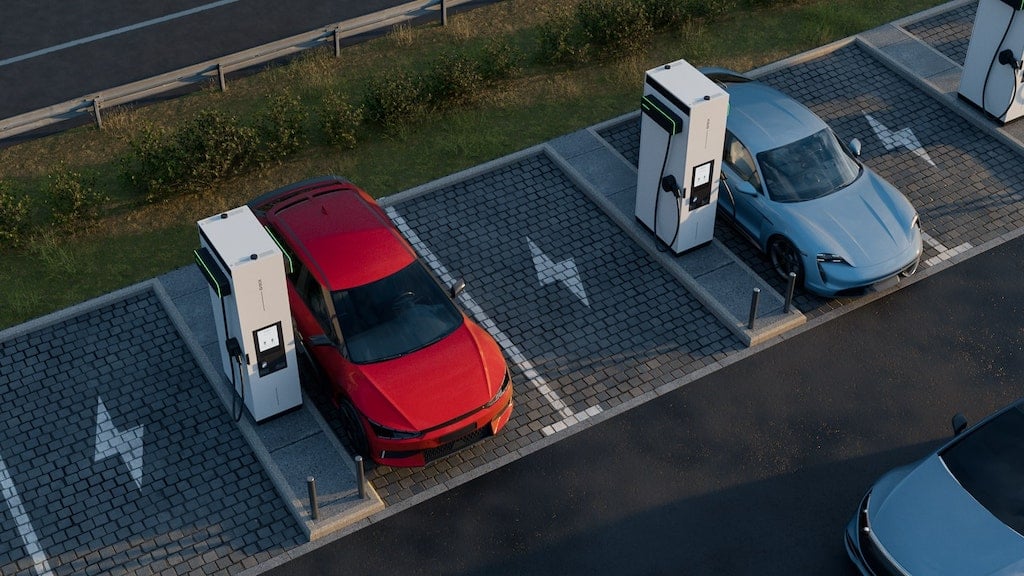
Decoding the jargon
One last point of housekeeping before diving into the 4 key investment strategies for Level 3 charging. There are a few terms – CPO, EMSP, charge point owner – which could do to be explained, as these are the three most common roles an investor would take on, or engage with when entering the fast-charging market.
What is a Charge Point Operator (CPO)?
A charge point operator (CPO) could be a manufacturer or trader of charge points, in charge of the planning, installation, grid integration, and operation of the units you invest in. Additionally, they may also be responsible for hardware maintenance and software management.
What is an Electric Mobility Service Provider (EMSP)?
An Electric Mobility Service Provider (EMSP) is a company set up to offer a wide range of EV support services, including the roles typically filled by a CPO. However, an EMSP would tend also to provide services to the end-user as well, such as payment and subscription services, and network solutions.
What is a Charge Point Owner?
A charge point owner (rather than an operator) is the investor whose capital has procured the DC fast charging stations and financed their installation on-site. Their responsibilities include ownership and oversight of the charging infrastructure, though they may well choose to outsource all practical management of the stations to a CPO or EMSP.

The four main investment strategies for entry into the DC fast-charging market
DC charging investment strategy #1 – Direct ownership
The most straightforward of the four main investment strategies (at least in terms of its definition) is direct ownership.
This refers to the process of purchasing DC charging units outright, purchasing or leasing the land for your charging infrastructure, planning installation and preparing the site, bankrolling installation of the units, and financing their upkeep.
You may, however, still elect to bring a CPO or EMSP on board to help you manage your fast charging stations from a technical (though not financial) standpoint.
Exploring the advantages and challenges of direct ownership for investors
As an investment strategy, direct ownership requires the most start-up capital, yet results in an investment model with the greatest potential for long-term growth and ROI. Here’s a list of further advantages direct owner-investors may hope to enjoy:
- Complete control over the project, with the flexibility to customize charging infrastructure to meet the investor’s, and its customers,’ specific needs.
- Earn revenue created by users charging their EVs at the investor’s charge points. This revenue is expected to grow in tandem with the growing demand for electric vehicles.
- Establish a unique brand presence early in the game, leveraging the charging infrastructure as a marketing tool to cultivate long-term brand loyalty.
On the other hand, direct ownership also comes with its fair share of investment challenges.
- A significant upfront investment is required for equipment, installation, and ongoing operational expenses.
- Profit margins may begin to narrow as the market grows – owing to a combination of market saturation and escalating competition.
- Owning DC fast charging stations outright entails several other, non-monetary responsibilities, including a need for technical expertise, being responsible for charger maintenance, applying for the appropriate construction permits, and complying with local rules and regulations.
These risks can, understandably, be enough to make potential direct owners think again about their investment. Thankfully, however, mitigation of risk is possible. There exist a number of cost, branding, and revenue levers that you may employ to minimize the investment required and maximize your return. Here are a few examples:
Costing levers
- Successful application to the government or local council grant and subsidy schemes, the likes of which are being introduced in countries around the world.
Branding levers
- Differentiation will likely prove key to providing customers with a unique fast charging experience, increasing “stickiness”, or customer loyalty. This would help to mitigate the narrowing of profit margins as the market grows.
Revenue levers
- Introduce advertisements to the charging locations for an additional revenue stream.
- Colocation with existing (or planned) retail and hospitality outlets.
- Collaboration with local EV fleets (such as taxi, rideshare, haulage, or delivery companies), offering rewards in exchange for their exclusive service.
Key considerations for direct ownership
As Linda Graves, CEO and Founder of EV Driver, made clear in one of our recent podcast episodes: direct ownership of a DC fast charging station, let alone a site, would require “very deep pockets” and a variety of important aspects to consider.
We’ve already drilled this home, but it’s worth taking a last look at exactly what these costs would comprise:
- Cost of the individual charging station units (between $50,000-$100,000 on average).
- Improvement of existing infrastructure (such as connection to the energy grid) to accommodate higher electricity consumption.
- Preparation of the site (leasing, landscaping, lighting installation).
- Unit installation and associated labor costs (on average about 30-50% of total charge point cost).
- Acquirement of any necessary permits and compliance with local rules and legislation Purchase or lease of software to manage the DC charging units.
- Ongoing and preventive maintenance.
- Budgeting for future developments in charging technology and consequent alterations to your charging infrastructure.
Operational aspects of DC fast charging direct ownership
As a direct owner, your responsibilities and the operational considerations you must make are considerably more taxing than as a part-owner, leaser, or when working with a CaaS provider. As the architect of your site, you will have to independently assess and decide upon factors such as site selection, software, permits and calibration laws, maintenance, and customer service.
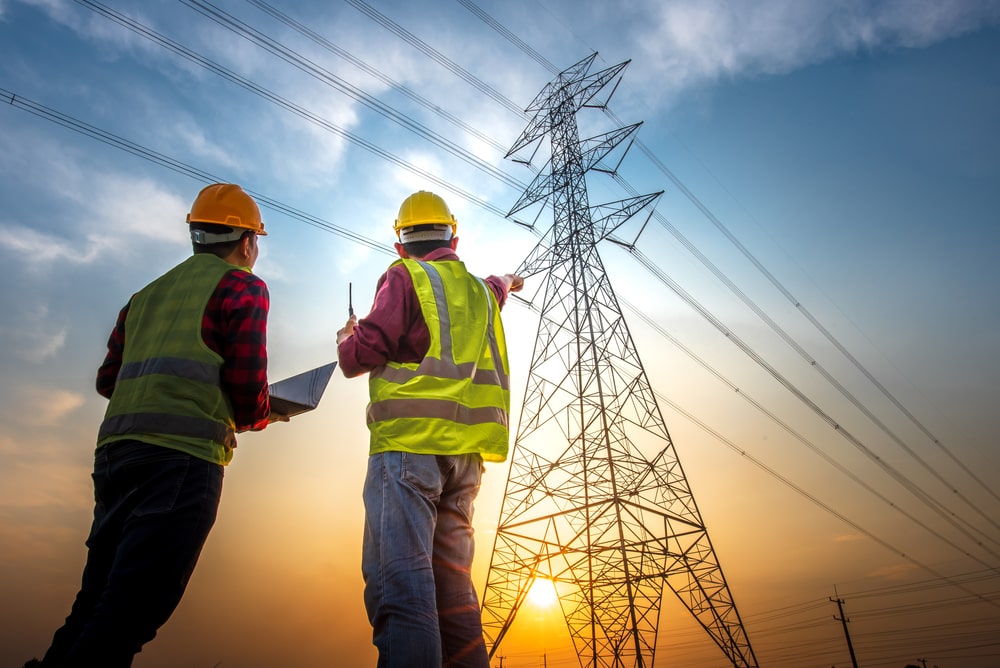
DC Charging Investment Strategy #2 – Leasing
Leasing offers a welcome alternative to direct ownership for those without “deep pockets.” It operates in a similar fashion to the leasing of an electric car: the investor avoids high upfront costs by agreeing to a long-term leasing contract with a CPO or EMSP, paid in monthly or yearly installments.
The CPO/EMSP would then oversee assessing your site, your specific needs, and the requirements for charge point installation. They would then conduct the installation of your chosen DC charging units at no direct cost to the investor.

At the end of your leasing contract – typically 1-7 years – you may then have the option to take out a new lease or pay off outstanding costs to become a direct owner. As a DC fast charge leaser, you may or may not – depending on your CPO and contract – be left in control of charger maintenance, operation, and customer support.
Exploring the advantages and challenges of leasing for investors
The most obvious and major benefit to the leasing model of DC fast-charging investment is the lack of massive up-front investment. Costs are instead parsed out over a period of several years, thus making DC charging accessible to a much wider and more diverse range of investors. Here’s a look at a few other key advantages of leasing:
- The ROI for a leasing strategy has the potential to be higher, earlier, when compared to direct ownership – with a lower initial investment, the investor requires less custom from EV drivers to turn a profit.
- Investors would receive the revenue (in whole or part, depending on their contract) from each charging station conducted at their DC charge points.
- The length of commitment is more flexible and potentially shorter than with the DC fast-charging direct ownership strategy.
Leasing DC fast chargers has two notable drawbacks:
- Because lease fees add up over time, the ultimate cost of leasing may – depending on the length of time you lease for – end up costing you more than the initial investment required for direct ownership.
- You can think of this like renting vs buying a house – typically, monthly rental payments are significantly higher than monthly mortgage repayments; but the mortgage requires a sizeable initial cash injection whereas renting does not.
- Leasers may have limited, or even no control over how the charging infrastructure is set up, customized, and run, as these decisions are often determined by the CPO or EMSP which drafted the leasing contract.
DC Charging Investment Strategy #3 – Charging as a Service (CaaS)
Our penultimate investment strategy for DC fast charging is, like leasing, also tailored toward investors without the capital required for direct ownership. Charging as a Service (CaaS) is a subscription-based model in which investors pay a CaaS provider a monthly fee in exchange for a DC fast charging service that suits their needs. The CaaS provider would cover all the costs associated with establishing DC chargers in the investor’s chosen site.

Exploring the advantages and challenges of CaaS for investors
CaaS is an investment strategy for investors looking to provide their customers, employees, or EV fleet with fast, comprehensive charging solutions on-demand. The investor would take no direct profit from the charging sessions, nor would the end-user have to pay to charge their EV at the CaaS station (unless the investor passed a portion of their subscription costs onto the user).
Instead, the major advantage of the CaaS investment strategy is that it delivers a hands-off, trouble-free means of passing on a highly desirable service to a demographic of your choosing. Here are some further examples:
- Companies can use a CaaS subscription to provide their employees free fast-charging stations in the office car park, or at CaaS-registered charge stations along their commute.
- This may help improve staff retention rates, staff loyalty, and encourage a wider talent pool for recruitment.
- EV fleets (such as delivery and taxi companies) can use CaaS to provide their drivers with accessible and free ultrafast charging.
- Independent and chain businesses alike (such as fast-food restaurants, hotels, or stores) can use CaaS to entice customers with the offer of DC fast charging.
Other advantages include:
- The CaaS provider handles all financial and logistical responsibilities, from equipment purchase and installation to software management, maintenance, payment processing, and customer service.
For those to whom CaaS appeals, the only major downside is that the investor has no control over how the DC fast charging points are operated or maintained; nor do they have a potential future stake in ownership.
Moreover, whilst the most affordable investment strategy at present, CaaS contracts are likely to remain costly, so care should be taken when weighing these against potential ROI.
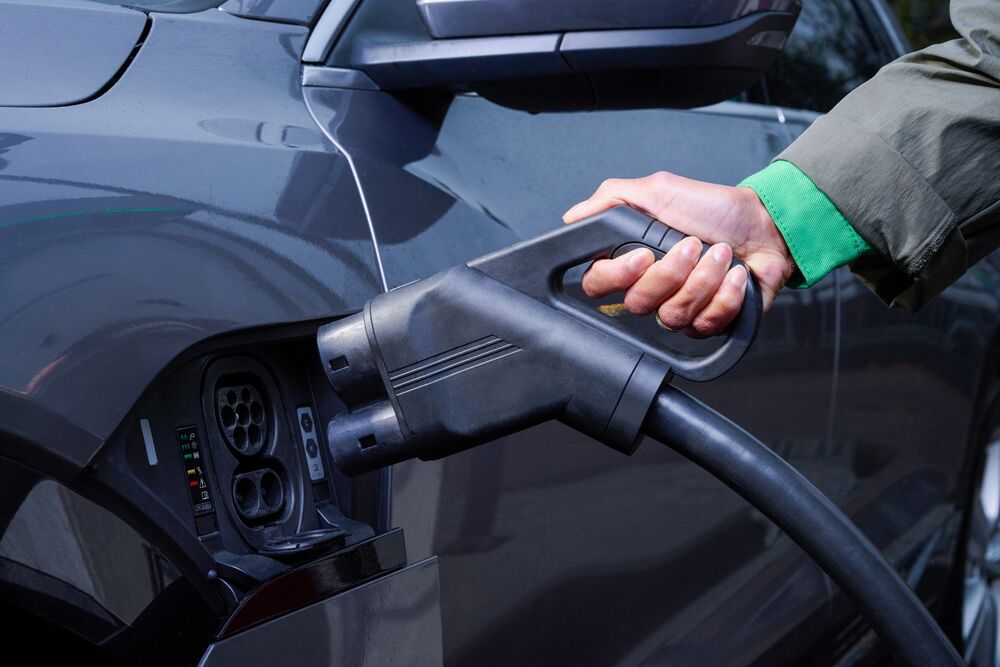
DC Charging Investment Strategy #4 – Partnered Shareholding
Partnered shareholding, or the shared revenue model, is the final investment strategy on our list. It shares a lot of similarities with direct ownership, with one major difference – ownership is shared among one or several additional parties, in lieu of a proportional share in revenue from the fast-charging site.
Exploring the advantages and challenges of shareholder collaboration for investors
For investors interested in the notion of direct ownership, but not keen to take on full fiscal and logistical responsibility for a DC charging project, partnered shareholding certainly has its advantages:
- Responsibility for the project can be shared among various backers, each bringing their own connections and expertise to the table – e.g. CPOs with expertise in charging stations and installation, site hosts, electricity providers, and automakers.
- EV owners may be more drawn to a site developed by such a collaborative effort, knowing that the charging station is likely dependable, trustworthy, and effective.
- The significant upfront investment required by direct ownership is shared among investors, significantly lowering the cash injection required from each party.
- Collaboration can foster innovation; key in an industry that is constantly – and rapidly – evolving.
Drawbacks to the partnered shareholding investment strategy are not as obvious, though could include similar drawbacks to leasing or CaaS – as only one of several partners, you would forsake complete control over the architecture and management of your site in exchange for lowered costs.

Wrapping-Up: Choosing the Right Investment Strategy
Investment into the DC fast charging sector of the e-mobility industry could produce significant ROI in the long term. Its possibilities for investors have even been likened to the gold rush era of the Wild West.
Nevertheless, there is no avoiding the fact that entrance into DC charging sector will always be costly. Coupled with a delayed ROI (until EV adoption surpasses a threshold that makes fast charging more financially viable), it becomes evident that success as an investor will require a detailed investment strategy.
We hope readers will have come away with a firmer understanding of the investment opportunities open to them as potential backers of a young and promising market.
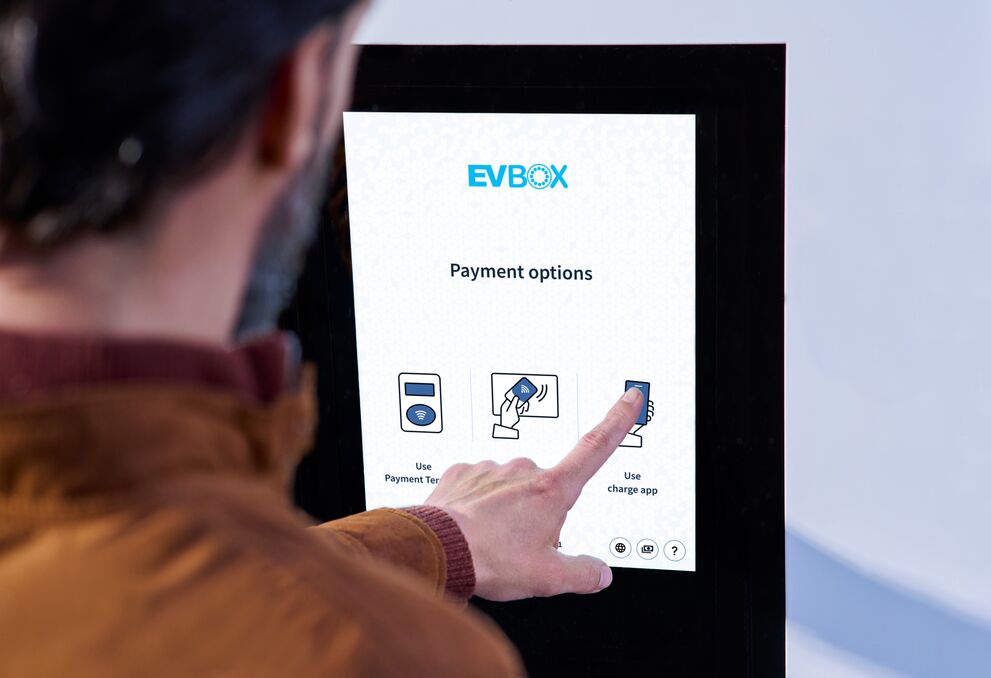
We’ve outlined the four most popular investment strategies for DC fast charging in this article: direct ownership, leasing, CaaS, and partnered shareholding (AKA the shared revenue model). Deciding which works best for you will take time and careful consideration.
DC fast charging investment strategies are but the tip of the iceberg when it comes to understanding the dynamic e-mobility industry. To continue learning, and developing your position as a potential investor, explore a library of other useful articles on the EVBox blog such as the emerging calibration laws, the current state of the DC market, or how to make money with EV charging.
If you want to know more about our DC charging solutions, click here.
Related articles

EV charging load management and the importance of cluster load balancing
Electric vehicle (EV) charging stations can add a substantial load onto your building’s power supply, often requiring...
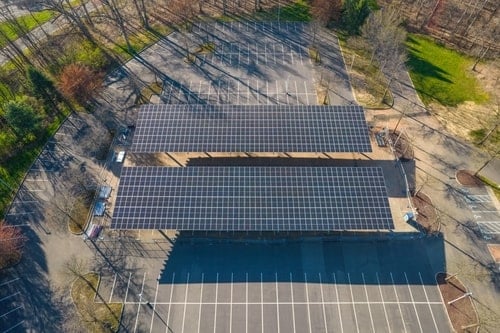
How to design a DC fast charging site
When thinking about installing DC fast charging stations on your site, careful consideration must be given to designing...
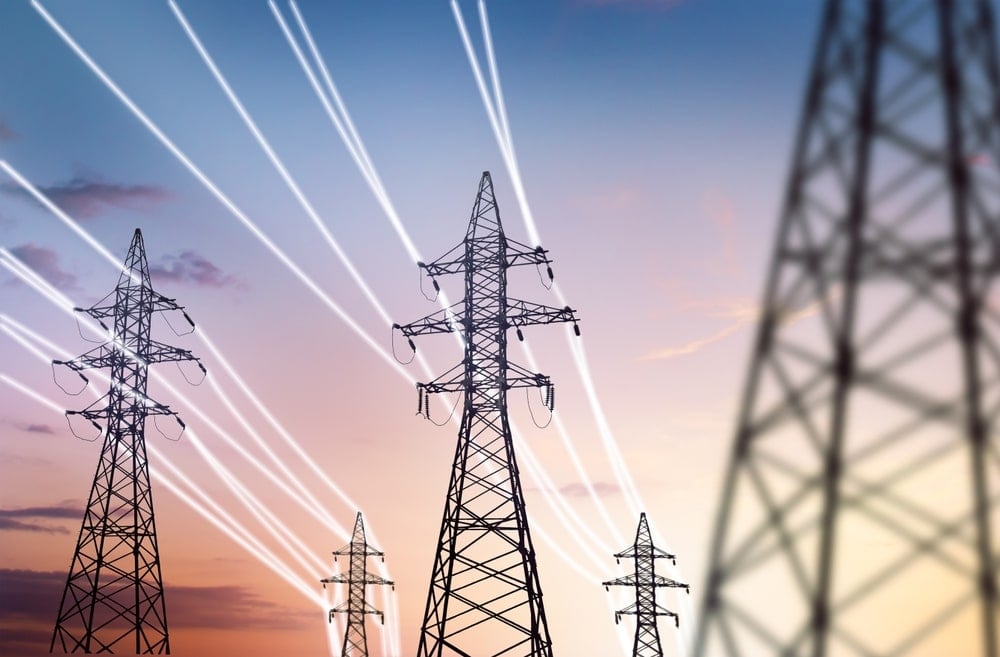
Grid connections for DC fast charging stations explained
The electrical grid is a large and established network delivering electricity from producers to consumers, and...
